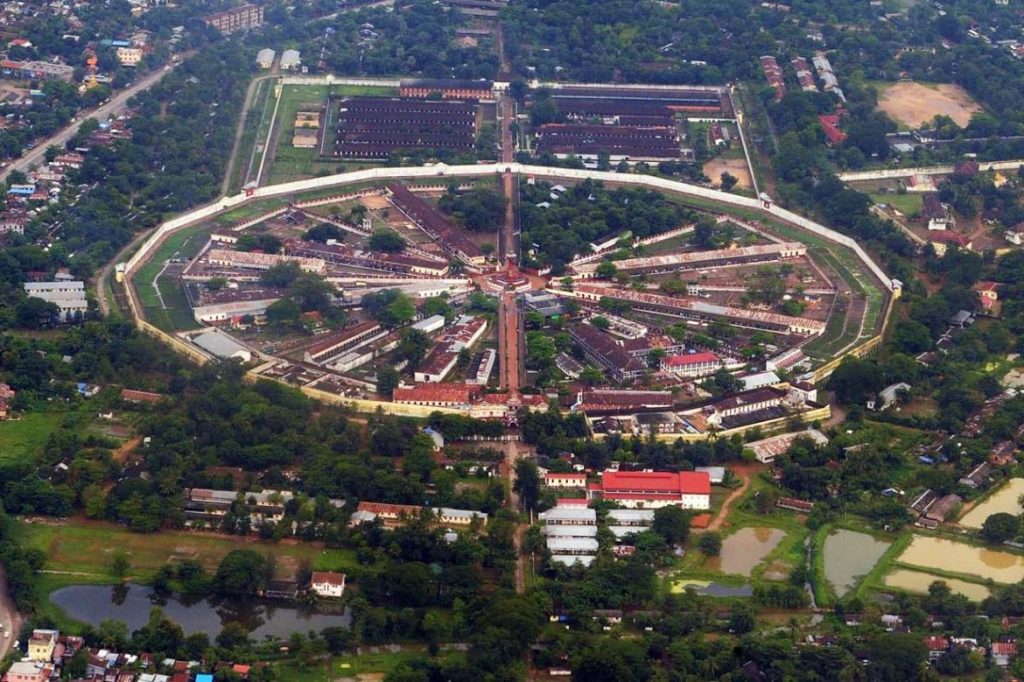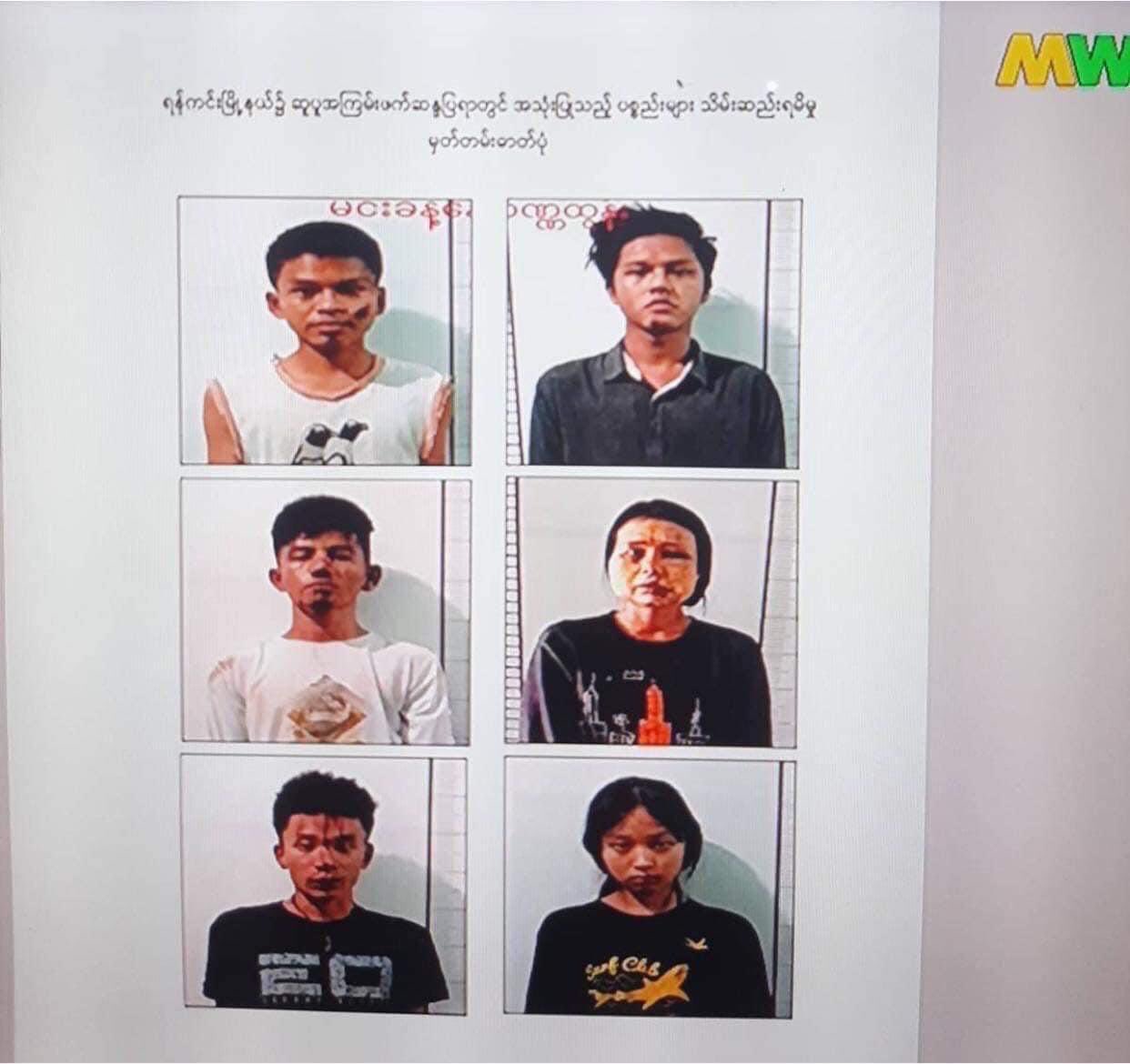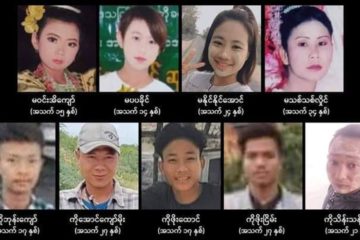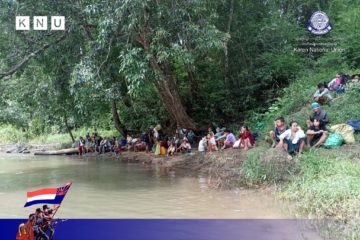by Myanmarese & Padauk

Torture in Myanmar has been an integral part of institutions for decades.
It is a tool used by the police and the army to obtain information, extract confessions, terrorise and annihilate political opposition.
This happens despite articles 330 and 331 of the penal code explicitly prohibiting this practice.
From the 1st of February till today, there are more than 5,000 political prisoners currently under detention in Myanmar (source AAPP, 19 June 2021), and at least 26 are known to have died due to torture while under custody (source AAPP). Of these 13 died within 24 hours in military custody and includes a 15 year old teenager. All the corpses returned to the families bore evident signs of violence. Nonetheless, the authorities have always denied the violence, and have forced families to sign death certificates stating implausible illnesses or accidents as causes of death.
These practices aim not only to cause physical pain to achieve their goals, but also to psychologically destroy the prisoner and obliterate any future willpower to retaliate.
In the last decade, since the beginning of the “democratic transition” era, political prisoners had drastically decreased and cases of torture seemed to have lessened, especially in the central area of Myanmar. Nonetheless, Myanmar has never signed the UNCAT (UN Convention against Torture and Other Cruel Inhuman or Degrading Treatment or Punishment) and the informant and espionage network, including the infamous Special Branch (political police), have never been dismantled. While some interrogation centers have been converted into new projects, including luxury hotels and apartments, Al Jazeera revealed that the Shwepyithar center, which appeared to have fallen into disuse, was “renovated” shortly before the coup. Satellite images show an intensification of activities in that location before February 1st.
When the Tatmadaw generals launched the coup on February 1, the “torture machine” was ready, and the “state of terror” was instantly restored.
What happens inside these centers?
When a political prisoner is arrested, the interrogation center is often the first stop. The prisoners all remember similar torture techniques. The most common appear to be a metal bar that is forcefully rolled along the shins repeatedly until the skin is peeled off. Electrocution to different parts of the body is also frequent. Other techniques include beating, burns, knife cuts, forcing the prisoner to hold extreme positions, sleep deprivation, sensory deprivation, food and water deprivation. Some anti-coup protesters have shown injuries from rubber bullets fired at close range while under detention.
On March 8, 2021 at dawn, policemen discovered and arrest Ko Zaw Myat Lynn who was hiding in a school. Ko Zaw Myat Lynn was an NLD exponent, activist, leader of the protests against the military regime. 24 hours after his arrest, the police called his wife and instructed her to go to the hospital to collect her husband’s body. The death certificate explained that he died of his injuries due to an attempted escape with a fall onto a metal railing from a height of nine meters. In reality, photos of the corpse reveal a face disfigured by boiling water or acid, the mouth completely melted and abdominal wounds so deep that the internal organs came out.
On April 9, during the Bago massacre in which more than 80 people died, Ko Thiha, a 30-year-old social worker, was shot in the leg. The police caught him, tied him to a motorbike and dragged him down the street. His body was found the next day in the morgue.
Torture can also be psychological. Speaking to Human Rights Watch, a 17 years old boy recalls his experience:
“On the third day, they drove me to a forested area about an hour away from wherever the interrogation place was,” he said. “They forced me to lie down into a pit while I was blindfolded, and my hands tied. They also planned to hit my head with a mattock, and I thought I was going to be buried alive when they started covering me with the dirt.”
Some civilians were detained without reason and died while in custody. Such is the case of Ko Min Min whose only participation was banging pots and pans at night time. Unfortunately it seemed that it was enough to provoke a pro-military neighbour. He leaves behind a young family.
“They shoot in the head, but they don’t know the revolution is in the heart”.
Poet Khet Thi died also while in military custody and his body showed signs of torture. His wife who had been detained with him was released earlier but then was asked to collect his body the next day. She was told he died of a heart attack but when she collected his body, it bore large stitches in the chest and the family claimed his internal organs were removed. Corpses are returned to families having had post-mortem autopsies performed on them without consent obtained from families.
Many of the protesters who had been detained had been wounded prior to being arrested and were flung into prisons without receiving any medical attention. In the early days of the coup during the crackdown in Mandalay at a shipyard, a man died from his injuries was reported by the doctor who was there, begging the authorities to let her treat him for his injuries after he was shot in the leg by a live bullet.
A diabetic man also died while in prison because of untreated diabetes. Prison medical facilities are abysmal and his family’s request to transfer him to a private hospital was denied by authorities. He fainted while standing for trial and then died the next day. His family was not informed of his death till they tried looking for him and his body was cremated without their consent. A young man crippled from his injuries by security forces who tortured him at a protest by shooting rubber bullets at close range has been denied medical treatment and is at risk of losing sight in one of his eyes. He was arrested while waiting treatment at a military hospital.


A case that exemplifies the functioning of this State of Terror is that of Phyo Wai Aung. It was April 15, 2010 when a terrorist attack killed 10 people and injured about seventy. On April 22, the police arrested Phyo Wai Aung, an engineer, without a warrant. The young man was taken to the Aungthapyay interrogation center, where he was tortured for 6 days to obtain a confession of guilty for the attack. Before giving in, the police forced him into unnatural positions for hours and burned his genitals. The trial was a farce. Despite the tortures, the judges deemed the confession and various falsified evidences submitted by the police, as valid. Phyo Wai Aung was sentenced to the death. A few months later he was released with an amnesty (an unofficial way to declare him innocent), but his health was already compromised. His body would soon become paralyzed from the waist down. He died shortly after.
In ethnic regions, torture is common even outside of interrogation centers. Prisoners of war have been tortured to extract information on enemy armies for decades. These captured soldiers are often enslaved, and become porters for the Tatmadaw. The Tatmadaw is also known to have used detainees as human shields.
Women are vulnerable anywhere at any time. Sexual violence has been used for decades as a weapon of war to terrorise the population, especially in ethnic areas. Karen, Karenni, Kachin, Chin, Rohingya and now even Bamar, all share similar stories of rape by soldiers who are never held accountable for their crimes. Sexual abuse has been reported in main cities as well. Women have reported rape threats, unnecessary contact, or even being beaten in the genital area. Rapes in Myanmar are often underreported due to police inaction and social stigma.
There are also many cases of “forced disappearances”. These missing people may not become frontline news but are nevertheless important to consider in the Tatmadaw’s state of terror. Families and friends go from prison to prison unable to locate their loved ones. There is no consolation, no body to bury. A famous example would be Burma Campaign UK activist Wai Hnin Pwint Thon’s father who is kept in prison in-communicando from his family. Sometimes pro-democracy activists are unable to express themselves freely because there maybe repercussions on detained family members or friends.
The AAPP reports that at least 75 people in Myanmar maybe missing since the 1st of February 2021.
Foreigners are kept in better conditions in prison but the reasons for their arrests are violations of freedom of expression. Danny Fenster, an American citizen, held in Insein Prison and is the editor of Frontier Myanmar. He has been charged with the colonial era Penal Code 505A. U Swe Win, the Myanmar Now Editor and U Ko Bo Gyi, the founder and joint secretary of the AAPP were both political prisoners detained in the infamous Insein prison where they suffered torture. U Gambira, a Buddhist monk who lead the Saffron Revolution protests in 2007, spent 6 years behind bars and was forced to watch family members and friends being tortured. Living in Australia now, he has been diagnosed with Post-Traumatic Stress Disorder. He describes Burmese prisons as “ Man-made hells on earth”.
Sources:
- https://aappb.org/?p=16032
- https://www.rfa.org/english/news/myanmar/dead-06212021183056.html
- https://www.bbc.com/news/world-asia-57380237
- https://www.irrawaddy.com/news/burma/myanmar-junta-forces-torture-civilian-to-death.html
- https://myanmar-now.org/en/news/was-min-min-tortured-to-death-for-banging-pots
- https://www.irrawaddy.com/news/burma/tortured-to-death-in-myanmar-regime-custody.html
- https://www.rfa.org/burmese/program_2/myanmar-military-coup-06092021231532.html
- https://www.nytimes.com/2021/05/29/world/asia/myanmar-prison-coup.html
- https://edition.cnn.com/2021/06/10/media/myanmar-coup-prison-american-journalists-intl-hnk-dst/index.html
- https://aappb.org/?p=6431
- https://www.myanmar-now.org/en/news/detained-at-night-lifeless-by-morning-arrests-under-myanmars-junta
- https://www.rfa.org/burmese/news/two-villagers-die-in-myingyan-06172021071621.html
- https://www.voanews.com/east-asia-pacific/myanmar-poet-dies-military-detention-family-says
- https://myanmar-now.org/en/news/diabetic-man-dies-after-two-months-in-insein-prison
- https://abcnews.go.com/International/wireStory/myanmars-military-disappearing-young-men-crush-uprising-77499421
- https://www.nytimes.com/2021/02/28/world/asia/myanmar-protests.html
- https://www.amnesty.org/en/latest/news/2011/11/myanmar-political-prisoners-held-dog-cells-and-denied-water/
- https://www.hrw.org/news/2021/06/08/rights-women-violated-myanmar-prisons
- https://www.france24.com/en/live-news/20210514-myanmar-teen-describes-junta-s-brutal-treatment-of-detained-women



0 Comments